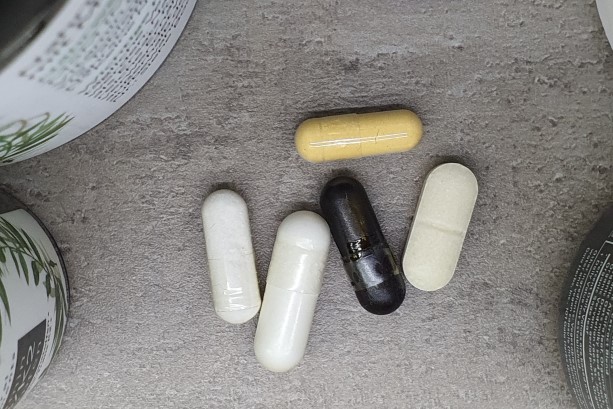Ktorým zložkám vo výživových doplnkoch sa vyhýbať a prečo

Je to celá veda a nie každý má chemické vzdelanie, aby bol oboznámený s každou zložkou výživového doplnku. Napriek tomu sa aj laik dokáže celkom slušne zorientovať, pokiaľ však pozná 7 dôležitých bodov, ktoré by mal mať na pamäti pri výbere svojho vitamínu alebo iného doplnku. Je načase začať dbať na zloženie potravín, ktoré do seba dostávame, a zobrať tak zodpovednosť za svoje zdravie do vlastných rúk.
1. Prísady vyrobené z plodín GMO
Informácie o tom, že akákoľvek zložka výživového doplnku pochádza z GMO plodiny, v zložení alebo na obale pravdepodobne nenájdete. Vitamíny sa často vyrábajú z kukurice. Kukurica je jednou z najbežnejších geneticky modifikovaných plodín. Medzi ďalšie patrí sója, cukrová repa, repka olejná, papája, tekvica, bavlna, alfa alfa a cuketa. Hovoríte si, áno, sú to GMO, ale čo s tým? Problém GMO plodín je, že sú prispôsobené tak, aby odolali agresívnemu chemickému postreku a tiež, že z nich absorbujú toxické látky. V týchto plodinách bol v niekoľkých štúdiách nájdený toxický formaldehyd a toxické ťažké kovy, ako je arzén, olovo, kadmium alebo ortuť. Ďalším aspektom je, že DNA týchto plodín bola zmenená génmi odvodenými z baktérií a vírusov, ktoré nikdy predtým neboli súčasťou ľudskej stravy. Keď náš imunitný systém zachytí takéto nové sekvencie, napadne ich ako votrelec a pokúsi sa ich zbaviť. GMO potraviny sú toxíny, ktoré v tele spúšťajú zápalové procesy, ktoré sa postupom času stávajú chronickými. To je základom mnohých chronických chorôb. Pred kúpou výživového doplnku sa preto uistite, že je označený ako „bez GMO“ alebo „GMO free“. Je to veľmi dôležité.
Príklady zložiek pochádzajúcich z plodín GMO: cukor, glukózo-fruktózový sirup, sójový lecitín, aspartám, kyselina citrónová, aminokyseliny, maltodextrín, kvasnicové výrobky, glutamát sodný, arómy, kyselina mliečna, rastlinné bielkoviny, sorbitol, mnoho vitamínov (napr. Vitamín C - kyselina askorbová, askorbylpalmitát), xantán, melasa, citrát sodný a glycerol.
2. Zložky živočíšneho pôvodu
Mnoho zložiek výživových doplnkov pochádza zo zvierat a ani o tom nevieme. Dávajte si pozor na zložky ako želatína, stearan horečnatý alebo kyselina stearová živočíšneho pôvodu. Získavajú sa zo zvierat, ktoré mohli byť kŕmené zmesami obsahujúcimi GMO. Uistite sa preto, že vo vašom výživovom doplnku je uvedené, že je určený pre vegetariánov „vegetarian“ alebo vegánov „vegan“ / „plant based“, tj. že obsahuje zložky rastlinného pôvodu a je tiež bez GMO alebo bez GMO. Aj keď nie ste vegetarián alebo vegán, vždy radšej hľadajte vegetariánske / vegánske doplnky bez GMO.
3. Oxid titaničitý E171
Bežná zložka liekov a výživových doplnkov. Väčšinou je koncentrovaný v lymfatických uzlinách a pľúcach. Mnoho odborníkov na celom svete viní z tohto bieleho farbiva vedľajšie účinky, akými sú alergie, rakovina žalúdka, autoimunitné poruchy a orgánová toxicita. Podľa Medzinárodnej agentúry pre výskum rakoviny je oxid titaničitý klasifikovaný ako potenciálne karcinogénny pri vdýchnutí.
4. PCB a ťažké kovy, ako je olovo a ortuť
PCB sú polychlórované bifenyly, ktoré sa vyrábajú v priemyselnej výrobe a pri nesprávnom zaobchádzaní sa dostávajú do životného prostredia, najmä do vodných tokov. Spolu s ťažkými kovmi znečisťujú moria a oceány a hromadia sa hlavne v telách veľkých rýb. Výživové doplnky pre ryby preto nemusia byť bezpečné, aj keď sú čistené. Ak hľadáte kvalitné omega-3, existujú aj také, ktoré pochádzajú z bezpečných rastlinných zdrojov. Napríklad Omega-3 od Mary Ruth Organics sa získava z divého lišajníka. Skvelým zdrojom sú semená (ľanové, konopné, chia) a orechy.
5. Farbivá
Syntetické farbivá pochádzajú z vysoko čistených ropných produktov. Nebezpečné sú napríklad karmíny (kyselina karmínová) E120. Aj keď je to prírodné farbivo, je potenciálne karcinogénne a spôsobuje detskú hyperaktivitu. Ďalším je tartrazín E102 - žlté farbivo, potenciálna príčina kožných nádorov. Ďalej, amarant E123 - červené až červeno -modré farbivo, často mylne považovaný za rastlinu amarantu, existuje podozrenie na karcinogenitu a poruchy plodnosti. Brilantná modrá E133 je jasne modré syntetické farbivo. U myší boli hlásené malignity a môžu spôsobiť zmenu farby moču, výkalov a pokožky a s tým spojený pokles tlaku, metabolickú acidózu a dokonca smrť. Ďalšími veľmi problematickými sú napríklad E110 - SY žltá, E121 - citrónová červená alebo E124 - potravinárska červená.
6. Prírodné arómy
Slovo „prírodná aróma“ môže zahŕňať rôzne látky, ktoré nie sú výrobcom presne špecifikované. Takýmto spôsobom môžete omylom konzumovať napríklad glutamát sodný, ktorý nie je na výrobku označený. Preto je lepšie vyhnúť sa prírodným príchutiam a arómam vo výrobkoch od neoverených výrobcov.
7. Alkohol v tinktúrach
Alkohol používaný v tinktúrach často pochádza z GMO kukurice. Preto by ste mali siahnuť po nealkoholických tinktúrach. Alkohol je toxický, oslabuje pečeň a znižuje potenciál účinnej látky. Výrobcovia sa pokúšajú nahradiť alkohol glycerolom. Ten sa však tiež často vyrába z GMO surovín ako repkový alebo slnečnicový olej. Dajte si pozor na to, aby bolo na fľaštičke uvedené označenie GMO-free, non GMO alebo bez GMO.
Zdroje:
https://www.vsetkoogmo.sk/
https://www.ferpotravina.cz/
https://biobalanceinstitute.com/health-news/6-toxic-ingredients-probably-didnt-know-vitamin/
https://www.instagram.com/omrvinkami_k_zdraviu/
Anthony William: Medicínske médium


Zanechajte svoj komentár